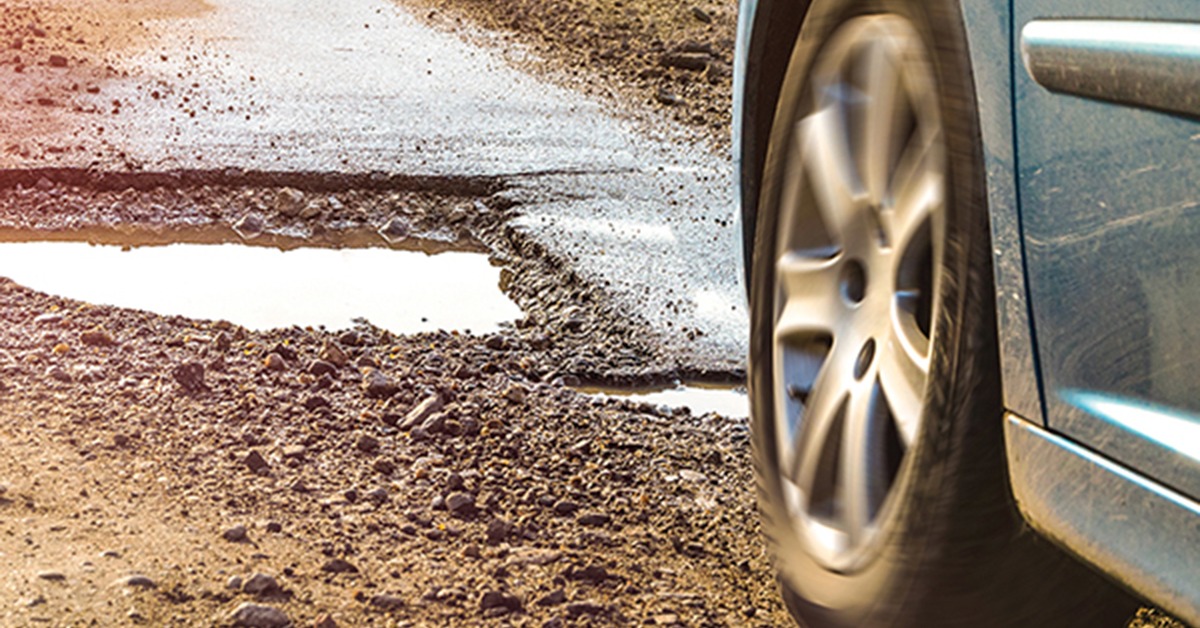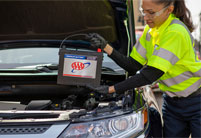Pothole Problems: How to Avoid Them This Spring
Pothole Problems: How to Avoid Them This Spring

Potholes are just part of life for many New York motorists, especially after another cold, wet winter. Moisture and traffic take their toll on the road surface, often leading to potholes in the springtime.
Swerving to avoid a pothole might be your first instinct, but think again. Todd Ingraham, manager of fleet operations for AAA Western and Central New York says it's best to take your foot off the gas and drive on over the pothole.
"If the pothole is unavoidable, keep your course and reduce your speed prior to driving over it," he says. Do not swerve to avoid the pothole, which could result in a collision or traffic crash.
Something to keep in mind, Ingraham says, is that many newer cars have low-profile tires, which means there is less tire between the rim and the road to absorb impact. These tires are more susceptible to damage, so start paying attention if you hit a pothole.
"Look for things like a new vibration, your vehicle pulling to one side, or a thumping coming from the tire that made contact with the pothole," he says. "If anything like this is noticeable, it's a good idea to have your vehicle examined."
To aid motorists in protecting their vehicles from pothole damage, AAA recommends the following:
Inspect Tires – Make sure tires are properly inflated and have enough tread. An underinflated or badly worn tire is more likely to suffer damage or allow the wheel or suspension to be damaged when hitting a pothole.
Inspect Suspension – Make certain struts, shock absorbers and other suspension parts are in good condition. Changes in vehicle handling, excessive vibration or uneven tire wear can indicate damaged or worn components.
Look Ahead – Make a point of checking the road ahead for potholes. Before swerving to avoid a pothole, check surrounding traffic to ensure this won’t cause a collision or endanger nearby pedestrians or cyclists.
Slow Down – If a pothole cannot be avoided, reduce speed safely being sure to check the rearview mirror before any abrupt braking. Hitting a pothole at higher speeds greatly increases the chance of damage.
Beware of Puddles – A puddle of water can disguise a deep pothole. Use care when driving through puddles and treat them as though they may be hiding potholes.
Check Alignment – Hitting a pothole can knock the wheels out of alignment and affect the steering. If a vehicle pulls to the left or right, have the wheel alignment checked by a qualified technician.
Recognize Noises/Vibrations – A hard pothole impact can dislodge wheel weights, damage a tire or wheel, and bend or even break suspension components. Any new or unusual noises or vibrations should be inspected immediately.
"It's good to have your vehicle looked at by a professional/ certified mechanic," Ingraham says. "If you're not sure where to take your car, AAA's Approved Auto Repair program can help you find a local mechanic you can trust."
Don't sweat searching for a mechanic last minute. Let AAA do the work for you and ease your mind with a trustworthy mechanic.












